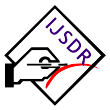Imp Links for Author
Imp Links for Reviewer
Research Area
Subscribe IJSDR
Visitor Counter
Copyright Infringement Claims
Indexing Partner
|
Published Paper Details
|
|
| Paper Title: | Assessment of flood hazard zones using remote sensing, Geographic Information System and Analytic Hierarchy Method :a case study of Juba city |
| Authors Name: | Diliga Cosmas Nathaniel Araba , Dr. El-Kamil Hamad |
| Unique Id: | IJSDR2007017 |
| Published In: | Volume 5 Issue 7, July-2020 |
| Abstract: | Abstract—The recurrence in the event and seriousness of floods has rapidly increased worldwide. In any case, numerous areas around the world, particularly in developing nations, come up short on the essential field observing information to portray flood hazard risk. Flash floods are hazardously quick-moving floods brought about by a lot of overwhelming precipitation in a restricted zone. These sorts of floods happen for an assortment of reasons, including concentrated precipitation, and enormously affect the nature and social structure of the zone. They pulverize drainage frameworks in urban areas; structures can be altogether harmed and even wrecked. Many developing nations are confronted with fast and uncontrolled urbanization, particularly settlements that were fabricated near riverbeds. Urbanization along these lines would cause impermeable surfaces where percolation of water can't happen and the impact of flood likewise increments. This study focused on the assessment of flood hazard areas of Juba city using remote sensing, geographic information system and analytic hierarchy process. It is a city where flash flooding is very common whenever it rains heavily either due to the blocking of water channels by buildings constructed on waterways or due to lack of drainage channels. It’s of this view that flash flood mapping to recognize locales in high hazard flood zones is one of the integral assets that will be advantageous to urban and infrastructure organizers, hazard administrators, and calamity response or crisis administrations during extraordinary and extreme precipitation occasions. To achieve the above objective, thematic layers such as slope, rainfall, geology, drainage density, distance from the drainage network, soil texture, topographic wetness index, land use land cover, flow accumulation, elevation were prepared and geocoded to WGS-1984 (UTM zone 36N) and weights were assigned using analytic hierarchy process and then raster calculator in ArcGIS was used to generate the final flood hazard map. The flood hazard zone map was generated with four classes namely; very safe, safe, high and very high with 1.19%, 59.52%, 38.69% and 0.60% respectively. The flood hazard zones map was not validated due to lack of ground data, however, as being the resident of the city and having knowledge of frequently flooded areas, visual inspection of safe and risky areas was done on google earth by converting the map into KML format and verifying, it was found that most risk areas fall in recently flooded areas. This study would fill the gap and provide a vital database of susceptible zones to flash flooding of the city to come up with early management mitigation measures. |
| Keywords: | Flood hazard, remote sensing, GIS, analytic hierarchy process. Juba city |
| Cite Article: | "Assessment of flood hazard zones using remote sensing, Geographic Information System and Analytic Hierarchy Method :a case study of Juba city", International Journal of Science & Engineering Development Research (www.ijsdr.org), ISSN:2455-2631, Vol.5, Issue 7, page no.150 - 161, July-2020, Available :http://www.ijsdr.org/papers/IJSDR2007017.pdf |
| Downloads: | 000337215 |
| Publication Details: | Published Paper ID: IJSDR2007017 Registration ID:192082 Published In: Volume 5 Issue 7, July-2020 DOI (Digital Object Identifier): Page No: 150 - 161 Publisher: IJSDR | www.ijsdr.org ISSN Number: 2455-2631 |
|
Click Here to Download This Article |
|
| Article Preview | |
|
|
|
Major Indexing from www.ijsdr.org
| Google Scholar | ResearcherID Thomson Reuters | Mendeley : reference manager | Academia.edu |
| arXiv.org : cornell university library | Research Gate | CiteSeerX | DOAJ : Directory of Open Access Journals |
| DRJI | Index Copernicus International | Scribd | DocStoc |
Track Paper
Important Links
Conference Proposal
ISSN
 |
 |
DOI (A digital object identifier)
  Providing A digital object identifier by DOI How to GET DOI and Hard Copy Related |
Open Access License Policy
Social Media
Indexing Partner |
|||
| Copyright © 2024 - All Rights Reserved - IJSDR | |||






Facebook Twitter Instagram LinkedIn